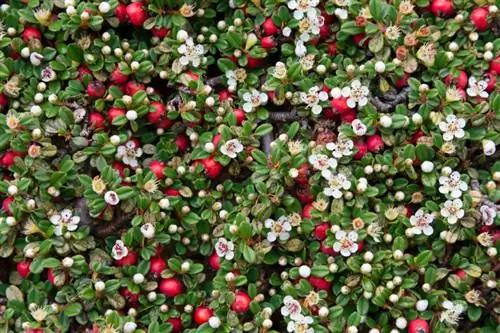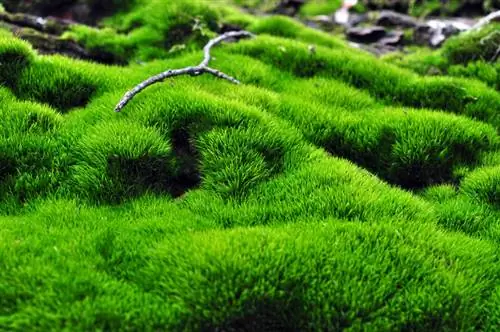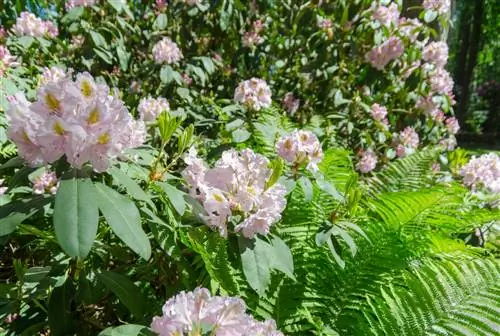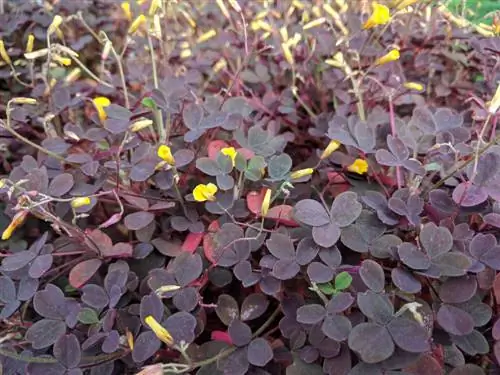- Author admin [email protected].
- Public 2023-12-25 17:45.
- Last modified 2025-06-01 06:02.
In many gardens you can see climbing hydrangeas that grow up trees, house walls or on a special arch. We explain how the popular plant can also be used as a ground cover and what you have to pay attention to.
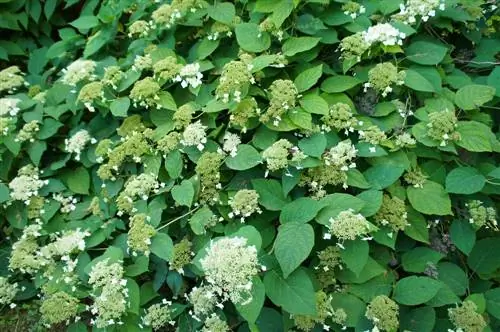
Can climbing hydrangeas be used as ground cover?
Climbing hydrangeas are ideal as ground cover because they grow creeping without a trellis and spread over large areas. They thrive in sunny to shady areas and bloom with white flowers from June to August.
Can you plant the climbing hydrangea as a ground cover?
Climbing hydrangeas areperfect as ground coverIf the robust, hardy plants, which are available in different varieties, do not receive any climbing support, they will not grow tall. The growth then proceeds in a creeping manner and the climbing hydrangea spreads over the desired area in the garden. The climbing hydrangea as a ground cover can be used for sunny as well as semi-shaded and shady areas - however, excessive sun should be avoided not to harm the plant.
Is the ground cover suitable for larger areas?
The climbing hydrangea as a ground cover isideal for greening larger areas in the gardenBecause it grows quite quickly and can ultimately spread over six meters or more, not many need it specimens to be planted. A planting distance of around two meters is ideal. If the climbing hydrangeas spread too much as ground cover, you can keep them small by cutting them back more vigorously than usual in winter when they don't bloom.
When does the climbing hydrangea bloom as a ground cover?
The climbing hydrangea blooms in midsummer fromJune to August. During this time it delights with large, white flowers. The autumn color of the plant is also beautiful.
When is the best time to plant the climbing hydrangea?
Climbing hydrangeas are best planted as ground cover in spring fromMarch to May. The planting hole must be sufficiently large due to the usually relatively large root balls.
Which soil is good for the climbing hydrangea as a ground cover?
Climbing hydrangeas like garden soil that isnot too heavyandwell-draining Slightly acidic substrates are definitely recommended so that the hydrangea feels comfortable and grows well. A special, acidic rhododendron soil is perfect and can be mixed with the existing substrate in the garden. After planting, the climbing hydrangeas as ground cover must be watered sufficiently, but waterlogging should be avoided - the permeable soil is needed so that too much water can seep away.
Can ground cover plants be affected by diseases?
Infestation with diseases or pests is extremely rare with the robust climbing hydrangea. However, the following diseases are possible:
- Powdery or downy mildew - can be recognized by powdery, increasingly numerous spots on the leaves
- Chlorosis - the chlorophyll deficiency is characterized by a yellowing of the leaves, which are covered in green veins (a little rhododendron soil or peat can have a preventive effect)
Tip
Don’t plant too late
Although hydrangeas are available in specialist stores all summer long, they should no longer be planted in late summer as either ground cover or climbing plants. Then you run the risk that it wasn't able to form enough roots before the first frost nights and therefore didn't grow optimally.


